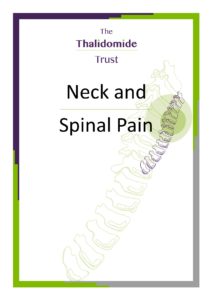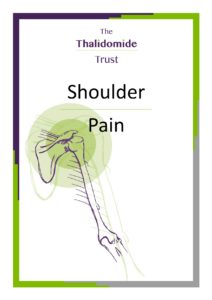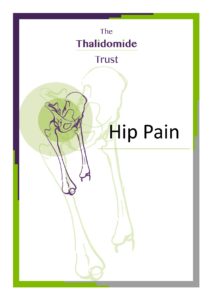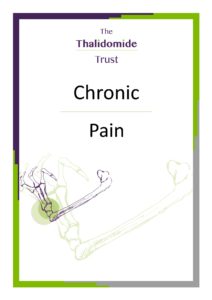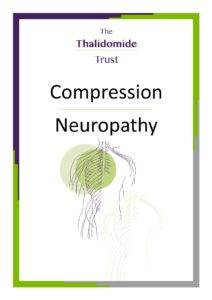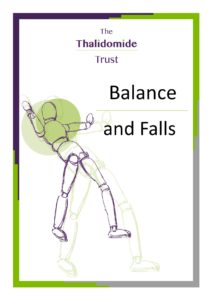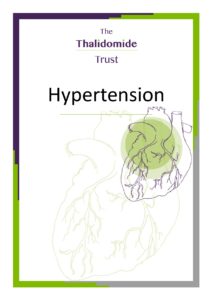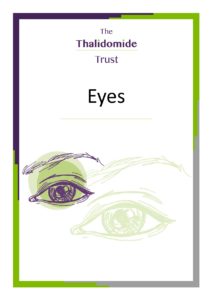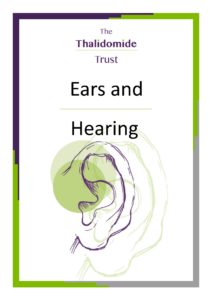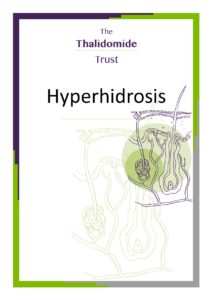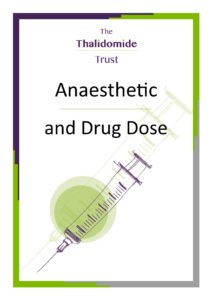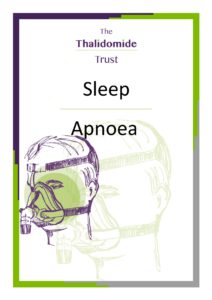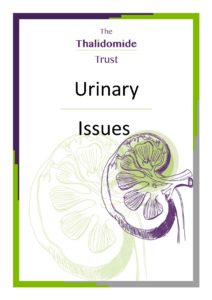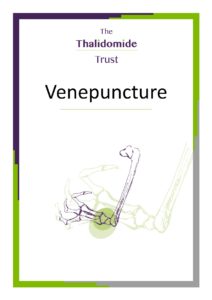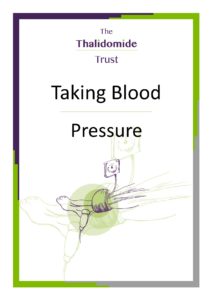 Resource Pack For GP Practices
Resource Pack For GP Practices
The Thalidomide Trust has produced guidance and advice to support all healthcare professionals working in primary care as they provide health care for people affected by thalidomide damage.
The full pack can be downloaded or use the links below to access individual topics.
Information Available
Musculoskeletal Issues
Practical Guidance
Download Full Resource Pack For GP Practices
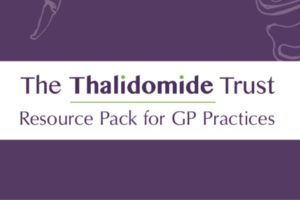
Musculoskeletal Issues
Neck and Spinal Pain
Neck and spinal pain are very common in thalidomide affected individuals. The Thalidomide Trust’s own research reported that 72% of them had back problems and 55% had neck pain or loss of movement.
This factsheet will provide you with information about the causes of neck and spinal pain in thalidomide affected individuals, special considerations, red flags to watch out for and how early investigation and referral to an experienced spinal surgeon can be life changing.
Shoulder Pain
Shoulder pain is common on our beneficiaries with 60% reporting it. This factsheet will tell you the causes of shoulder pain, special considerations, how interpretation of X-rays of the thalidomide affected shoulder needs to be done with caution and options for treatment. Even dysplastic joints can be amenable to surgery so the factsheet includes advice on how to find an appropriate and experienced surgeon for this potentially more complex surgery and how the Trust can help.
Hip Pain
Many thalidomide affected individuals complain of hip pain. Ongoing Holistic Needs Assessments performed by the Thalidomide Trust reveal that 40% of them experience hip pain and the number is rising.
This factsheet covers the causes of hip pain in beneficiaries, special considerations and what are the surgical considerations when a hip replacement is being considered. It also covers physiotherapy and occupation therapy considerations and how the Trust can help.
Chronic Pain
Data from the Thalidomide Trust’s ongoing Holistic Needs Assessments demonstrates that almost 90% of thalidomide affected individuals suffer from pain, with the commonest sites being the shoulder and back, closely followed by the hip and neck.
This factsheet covers the different reasons why thalidomide affected individuals have pain, treatment options, self-management strategies, when referral is appropriate and how the Trust can help.
Compression Neuropathy
A significant proportion of thalidomide affected individuals report neuropathic symptoms with over half reporting that they experience paraesthesia, according to the Thalidomide Trust’s own survey. Research conducted on behalf of the Trust has shown beneficiaries are more prone to nerve compression than the general population and there may be a suggestion of an underlying generalised neuropathy.
This factsheet covers the possible causes of these symptoms, how to investigate these often distressing symptoms, red flags to consider and when referral is appropriate.
Balance and Falls
Thalidomide affected individuals are frequently reporting issues with dizziness, balance and falls. This was confirmed by the Trust’s own research, which showed one third of respondents reported falls since childhood, but over a half reported they had started to fall in their 40s and 50s.
This factsheet covers the causes of balance and fall issues, special considerations for thalidomide affected individuals, self-management strategies, investigations and why early referral can be very important to avoid further injury and disability.
Other Issues
Hypertension
Thalidomide affected individuals are more likely to have risk factors for developing hypertension. For example, they are more likely to smoke than the average person; 25% of thalidomide affected individuals smoke, according to the Thalidomide Trust’s data, versus 14% of age matched people in the general population. In addition, their disability creates barriers to both exercise and maintaining a healthy weight. They are also more likely to drink alcohol to excess.
This factsheet covers the anatomical differences that thalidomide affected individuals may present with along with special considerations when it comes to investigating and monitoring a thalidomide affected individual with hypertension. It also includes assessment of cardiovascular risk, when it might be appropriate to refer to cardiology and how the Trust can help.
Psychological Impact
Thalidomide affected individuals are more likely to suffer from mental health problems, like depression and anxiety, than the general population. This was confirmed in a 2015 research study conducted by the Thalidomide Trust which showed that over half of respondents reported either anxiety or depression.
This factsheet covers the causes of mental health problems, special considerations, self -management strategies, when to refer and how the Trust can help.
Eyes
Although the most common disability caused by thalidomide is limb difference, a significant proportion of thalidomide affected individuals have damage to their eyes, ears and face.
This factsheet covers anatomical differences in those thalidomide affected individuals, special considerations, when to refer and how the Trust can help.
Ears and Hearing
38% of thalidomide affected individuals report hearing and ear related issues according to data collected for the Thalidomide Trust.
This factsheet covers how thalidomide affects the anatomy of the ear, special considerations and in what circumstances referral may be appropriate in addition to how the Trust can help. You can also direct beneficiaries to the hearing resources on the Trust’s website, details of which are found within the factsheet.
Hyperhidrosis
Many thalidomide affected individuals complain of excessive sweating, or hyperhidrosis, and this will often be present from childhood.
This factsheet covers possible causes, self management strategies, treatment options, when to refer and how the Trust can help.
Anaesthetic and Drug Dose
This factsheet covers additional issues which may be relevant when seeing a thalidomide affected individual. These include anaesthetic and intubation issues which may be relevant when you refer an individual for surgery or to Accident and Emergency, along with how some individuals may require reduced doses of medications.
Sleep Apnoea
This factsheet covers additional issues which may be relevant when seeing a thalidomide affected individual. The Sleep Apnoea covers information about risk factors for OSA in a thalidomide affected individual along with special considerations for treatment.
Urinary Issues
Urinary issues are common in thalidomide affected individuals. This factsheet covers how thalidomide affected individuals can have renal tract anatomical differences and when to refer for treatment.
Practical Guidance
Venepuncture
Venepuncture can be very challenging in those with Thalidomide Embryopathy due to both shortened limbs and abnormal vasculature.
In addition, many thalidomide affected individuals will have had traumatic experiences with venepuncture in the past for the above reasons and may have had occurrences where multiple unsuccessful attempts have been taken.
This factsheet covers anatomical consideration, self-management strategies and helpful advice on how to perform venepuncture along with how the Trust can help.
Taking Blood Pressure
The Thalidomide Trust is aware that, for some thalidomide affected individuals, it may not be possible to take a blood pressure reading using the traditional cuff method in the upper arm due to shortening or absence of limbs.
This factsheet covers how to take the blood pressure in the leg, looking for end organ damage and when to refer to Cardiology.
